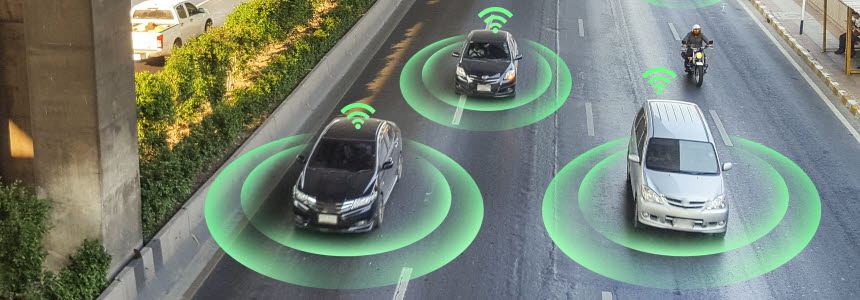
Workshop on Remote Operation of Intelligent Connected and Automated Road Vehicles
The workshop will be held on Sunday 2nd June 2024 in conjunction with the IEEE Intelligent Vehicles Symposium 2024. Online participation will be available for workshop participants. However, presenters who have submitted papers are required to attend the conference in person.
Date: Sunday, June 2, 2024
Time: 8:30–12:00 Korean Standard Time, KST (GMT+9)
Place: Jeju Shinhwa World, Jeju Island, South Korea
Registration information: https://ieee-iv.org/2024/registration/ External link.
External link.
This workshop intends to serve as a common research arena to initiate multi-disciplinary discussions on different components around remote operation of intelligent connected and automated vehicles on the road. This is the fourth workshop following the first three workshops on the same topic at IV2021, IV2022, and IV2023 (see below for info on previous workshops).
Road vehicles of interest include (but are not limited to) connected and automated vehicles that are passenger cars, trucks, and shuttles or buses. In this context, we assume there is a remote operator who operates the vehicle from a distance via wireless communication network. The remote operation is done at a remote operation station, where necessary interfaces for remotely operating the vehicle(s) are provided.
The workshop consists of three main parts: presentations from invited speakers, workshop paper presentations, and an interactive research discussion session. The workshop will start with presentations to set the stage on the current state of remote operation technologies. Workshop papers will be presented and invited speakers will state their latest insights on this hot topic. During the last part of the workshop, an interactive format will enable an in-depth debate in which workshop participants from industry, government, and research sectors across multiple countries will share experiences and ideas, as well as discuss design and technology goals for the future. We will discuss prospective research directions and develop ideas on how to tackle them.
IEEE IV 2024 – IEEE Intelligent Vehicles Symposium (ieee-iv.org) External link.
External link.
Workshop program
Time (KST) | Program |
|---|---|
8:30‑8:45 | Workshop opening |
8:45‑9:30 | A session on laws, policy, regulations related to remote operation of CAVs |
9:30‑11:30 | Workshop paper presentations (6 workshop papers) |
11:30‑11:50 | <to be decided> |
11:50‑12:00 | Workshop summary and closing |
Important dates 2024
- February 05, 2024 (extended): Workshop Paper Submission Deadline
- March 30, 2024: Workshop Paper Notification of Acceptance
- April 22, 2024: Workshop Final Paper Submission Deadline
- June 2, 2024: Workshops Day
Papers submitted for the workshop will undergo the same review process as the conference papers and will be published in the same proceedings.
We welcome and encourage submissions of workshop papers related to remote operation of intelligent connected and automated road vehicles under different topics, which includes, but not limited to, the following topics:
- Remote operation of road vehicles
- Connectivity challenges in road vehicle remote operation
- Human factors in road vehicle remote operation
- Human-machine interface for the remote operation of road vehicles
- Standards, laws, and regulations related to remote operation of road vehicles
- Vehicle design and technology to support remote operation of road vehicles
- System architecture for remote operation of road vehicles
For the first submission, a manuscript in US Letter format can be of 6-8 pages.
For the final submission, a manuscript should be of six (6) pages including references. A maximum of two (2) supplementary pages is permitted at an extra charge of 100 USD per page.
Template can be downloaded from here External link.
External link.
Download printable version of Call for papers Pdf, 249.8 kB.
Pdf, 249.8 kB.
Submission guideline
We announce that papers submitted for workshops will undergo the same rigorous review process as our main conference papers. Once accepted, these papers will also be published in the conference proceedings. Authors of all accepted workshop papers are required to present in person at the event.
If you are interested in contributing, please take the following steps:
- Prepare your paper according to the template above.
- Authors are invited to submit full-length papers up to 6 pages in the final submission, but the first submission can be up to 10 pages for technical content including figures and references. Additional pages will be charged at the rate of $100 per page and is limited to two pages per paper. Each accepted paper must be covered by at least one non-student registration.
- Submit using the Workshop Code: RemoteOperation. Authors should use the unique code assigned to the chosen workshop when submitting your paper via PaperCept.
Workshop paper submission  External link.
External link.
More information about Call for Workshop Papers on IEEE IV 2024 website External link.
External link.
- Maytheewat Aramrattana, Swedish National Road and Transport Research Institute (VTI), Sweden
- Jonas Jansson, Swedish National Road and Transport Research Institute (VTI), Sweden
- Andreas Schrank, German Aerospace Center (DLR), Germany
- Michael Oehl, German Aerospace Center (DLR), Germany
- Marek Vanzura, George Mason University, USA
- John Conway, Transport Canada, Canada
- Andrew Phillips, Transport Canada, Canada
The IEEE Intelligent Vehicles Symposium (IV) is a premier conference sponsored by the IEEE Intelligent Transportation Systems Society (ITSS). Researchers, engineers, practitioners, and students, from industry, universities and government agencies are invited to present their latest work and to discuss research and applications for intelligent vehicles and vehicle-infrastructure cooperation.
IEEE IV 2024 – IEEE Intelligent Vehicles Symposium (ieee-iv.org) External link.
External link.
Contact
-
Maytheewat Aramrattana
Researcher
maytheewat.aramrattana@vti.se -
Jonas Jansson
Head of research
jonas.jansson@vti.se
